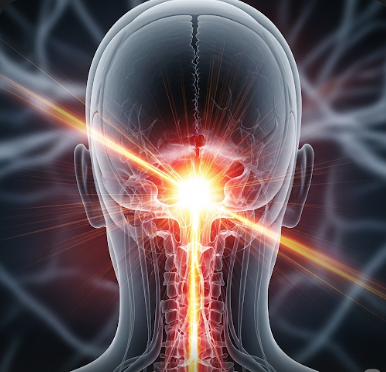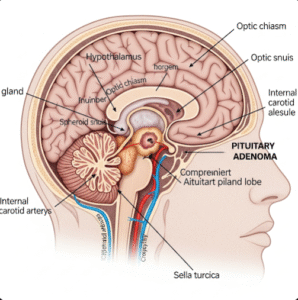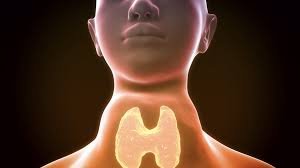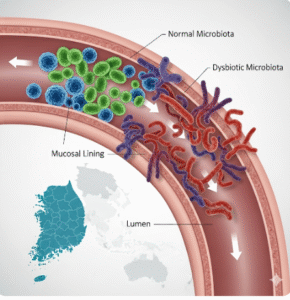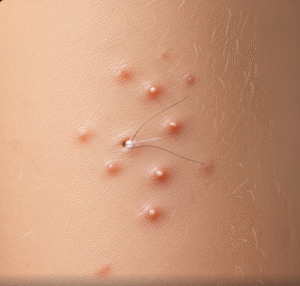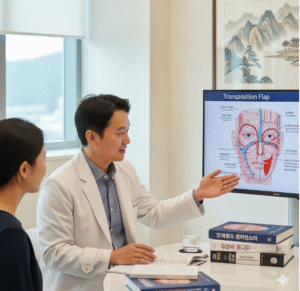Overview
Basilar Migraine, also known as Basilar-type Migraine (BTM), is a rare subtype of migraine characterized by neurological symptoms that originate from the brainstem and both hemispheres of the brain. Unlike typical migraines, basilar migraine often involves symptoms such as vertigo, double vision, difficulty speaking, and coordination problems, which can resemble more serious neurological conditions like stroke or transient ischemic attacks.
In Korea, neurologists and headache specialists provide advanced diagnostic and treatment services for basilar migraine. Hospitals offer comprehensive neurological evaluations, imaging studies, preventive therapy, and lifestyle counseling, ensuring that patients receive individualized care tailored to symptom severity and triggers. Early recognition and effective management are crucial to minimize complications and improve overall quality of life.
What is Basilar Migraine?
Basilar Migraine is a type of migraine with aura that originates from the brainstem or posterior circulation, rather than just one hemisphere of the brain. This can result in bilateral neurological symptoms, including sensory disturbances, dizziness, and difficulty with coordination.
The migraine usually progresses through distinct phases:
- Aura phase: Neurological symptoms such as vertigo, visual changes, speech disturbances, and limb weakness appear before the headache.
- Headache phase: Moderate to severe headaches typically occur, often located at the back of the head or affecting both sides.
- Postdrome phase: Residual fatigue, mild cognitive difficulties, or lingering neurological symptoms may persist after the headache subsides.
Basilar migraine can occur in both adults and adolescents, and although it rarely causes permanent brain damage, the severity of its symptoms can significantly disrupt daily life.
Symptoms
Symptoms of basilar migraine can vary in intensity and duration, often lasting from 30 minutes to several hours, with headaches sometimes persisting up to 72 hours. Common symptoms include:
- Vertigo or dizziness: Feeling off-balance or spinning sensations
- Visual disturbances: Double vision, blurred vision, or flashing lights
- Speech difficulties: Slurred speech (dysarthria) or temporary inability to speak (aphasia)
- Tinnitus: Ringing or buzzing in the ears
- Ataxia: Loss of coordination or difficulty walking
- Numbness or tingling: Usually affecting the face, arms, or legs
- Bilateral weakness or clumsiness in hands or limbs
- Severe headache: Often throbbing and affecting both sides of the head
- Nausea and vomiting
- Sensitivity to light and sound (photophobia and phonophobia)
The diversity and bilateral nature of symptoms make basilar migraine particularly challenging to diagnose without specialist evaluation.
Causes
The exact cause of basilar migraine is not fully understood, but multiple mechanisms are implicated:
- Brainstem dysfunction: Abnormal electrical activity in the brainstem triggers neurological symptoms.
- Cerebral blood flow changes: Temporary vasospasms in the basilar artery or posterior circulation contribute to symptoms.
- Genetic predisposition: Family history of migraines increases susceptibility.
- Neurochemical imbalance: Altered serotonin and other neurotransmitter levels may play a role.
- Trigger factors: Stress, hormonal fluctuations, certain foods (e.g., chocolate, caffeine, processed meats), sleep disturbances, or sensory stimuli such as bright lights or loud noises.
Risk Factors
Factors increasing the likelihood of basilar migraine include:
- Female gender: More common in women, particularly during reproductive years
- Family history of migraine
- Hormonal fluctuations: Menstruation, pregnancy, or menopause
- Lifestyle factors: High stress, irregular sleep, and dietary habits
- History of other migraine types: Individuals with aura or classic migraines are more susceptible
- Cardiovascular risk factors: Hypertension, smoking, or obesity may worsen symptoms
Complications
Although basilar migraine is typically not life-threatening, untreated or frequent attacks can cause significant complications:
- Stroke risk: Rarely, severe basilar migraine may trigger posterior circulation ischemia.
- Chronic migraine: Frequent attacks can lead to persistent headache disorders.
- Functional impairment: Difficulty with speech, balance, vision, and coordination may interfere with work, school, and daily activities.
- Psychological impact: Anxiety, depression, or fear of attacks due to unpredictable and debilitating symptoms.
Early diagnosis and preventive strategies significantly reduce the risk of complications.
Prevention
Preventing basilar migraine focuses on trigger avoidance, lifestyle optimization, and stress management:
- Identify and avoid triggers: Foods, beverages, sleep disruption, and sensory stimuli
- Maintain regular sleep patterns
- Healthy diet and hydration: Adequate nutrition and water intake support brain function
- Stress management: Meditation, yoga, exercise, and relaxation techniques
- Limit sensory overload: Reduce exposure to bright lights or loud environments
- Preventive medications: For patients with frequent or severe attacks, doctors may prescribe prophylactic therapy
Korean headache clinics provide personalized guidance on lifestyle management, trigger identification, and preventive care to minimize migraine frequency.
Treatment Options in Korea
Treatment of basilar migraine in Korea combines acute symptom relief, preventive therapy, and supportive care:
1. Diagnosis:
- Neurological examination to assess reflexes, coordination, and sensory function
- MRI or CT scans to rule out stroke or structural abnormalities
- Blood tests to exclude metabolic or systemic causes
2. Acute Treatments:
- NSAIDs or acetaminophen for mild to moderate headache
- Triptans under medical supervision for severe attacks
- Antiemetics to relieve nausea and vomiting
3. Preventive Treatments:
- Beta-blockers or calcium channel blockers to reduce attack frequency
- Antidepressants or anticonvulsants for chronic or recurrent migraines
- Lifestyle adjustments such as stress reduction, dietary changes, and sleep regulation
4. Supportive and Complementary Care:
- Physical therapy to improve balance and coordination during or after attacks
- Cognitive behavioral therapy (CBT) to manage anxiety and improve coping skills
- Patient education for early recognition of warning signs and effective self-management
Korean hospitals and neurology centers offer comprehensive migraine programs, combining medical therapy, lifestyle counseling, and psychological support to optimize outcomes for patients with basilar migraine.
In conclusion, Basilar Migraine is a rare, complex migraine subtype originating from the brainstem, causing neurological symptoms and severe headaches. Early recognition, preventive strategies, and advanced treatment options are essential for effective management. Korea’s modern neurology facilities provide thorough evaluation, expert care, and patient-centered support, helping individuals manage symptoms, reduce complications, and maintain a high quality of life.

